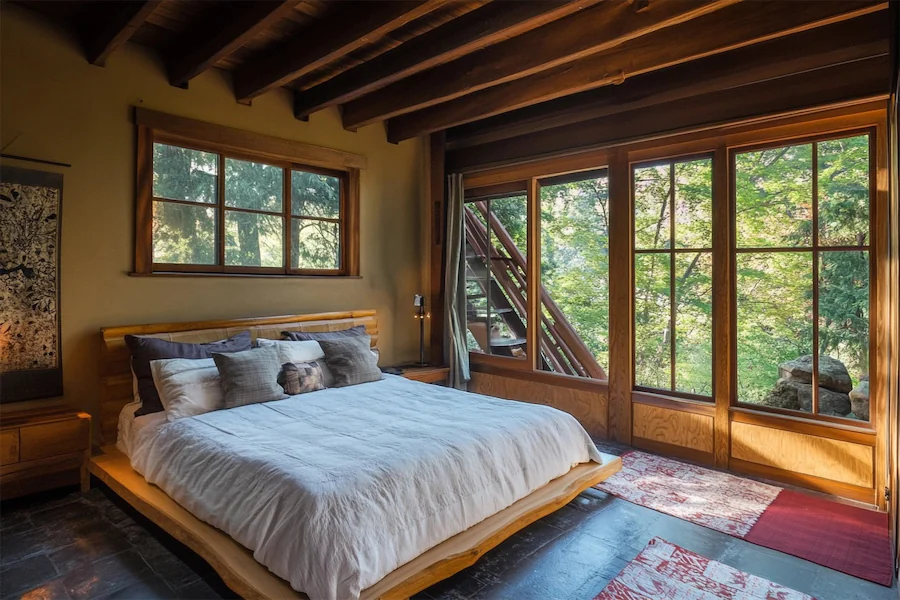A Zen bedroom embodies tranquility and simplicity, drawing inspiration from Zen Buddhism to create a serene environment conducive to rest and meditation. This article explores the history, key features, applications, considerations, and concludes with insights into designing a Zen bedroom.
Introduction to Zen Bedrooms
Zen bedrooms focus on minimalism, natural materials, and harmonious design to foster a peaceful atmosphere. By eliminating clutter and emphasizing balance, these spaces serve as sanctuaries from the stresses of daily life.
History and Origins of Zen Bedrooms
Originating from Zen Buddhism, which emphasizes meditation and mindfulness, Zen interior design seeks to create environments that promote inner peace. Incorporating elements of Japanese aesthetics, such as simplicity and a connection to nature, Zen bedrooms reflect these principles to cultivate calmness and clarity.
Key Features of Zen Bedrooms
- Minimalist Design: Embracing simplicity by using essential furniture pieces and keeping decor to a minimum reduces distractions and fosters tranquility.
- Natural Materials: Incorporating elements like wood, stone, and bamboo establishes a connection to nature, enhancing the room’s calming effect.
- Neutral Color Palette: Utilizing soft, earthy tones such as beige, gray, and white creates a soothing ambiance, promoting relaxation.
- Soft Lighting: Employing gentle, diffused lighting, including the use of candles or lanterns, contributes to a serene atmosphere.
- Natural Elements: Introducing plants or water features brings a sense of tranquility and life to the space, aligning with Zen principles.
Applications of Zen Bedroom Design
- Master Bedrooms: Transforming the primary sleeping area into a Zen retreat offers a peaceful haven for rest and rejuvenation.
- Guest Rooms: Implementing Zen design in guest bedrooms provides visitors with a calming and welcoming environment.
- Meditation Spaces: Designing a Zen-inspired area within the bedroom can serve as a dedicated space for meditation and mindfulness practices.
Considerations When Designing a Zen Bedroom
- Clutter-Free Environment: Maintaining organization and minimizing unnecessary items are essential to uphold the room’s serene atmosphere.
- Quality Over Quantity: Selecting high-quality, meaningful pieces over numerous decorations ensures functionality and aesthetic appeal.
- Personal Comfort: Incorporating elements that cater to individual comfort, such as ergonomic bedding and blackout curtains, enhances the room’s restful quality.
- Natural Light: Maximizing natural light during the day while ensuring the ability to create a dark environment at night supports a healthy sleep cycle.
Conclusion
Designing a Zen bedroom involves creating a minimalist, harmonious space that promotes peace and relaxation. By focusing on simplicity, natural materials, and thoughtful design, one can cultivate a serene sanctuary conducive to rest and mindfulness.
